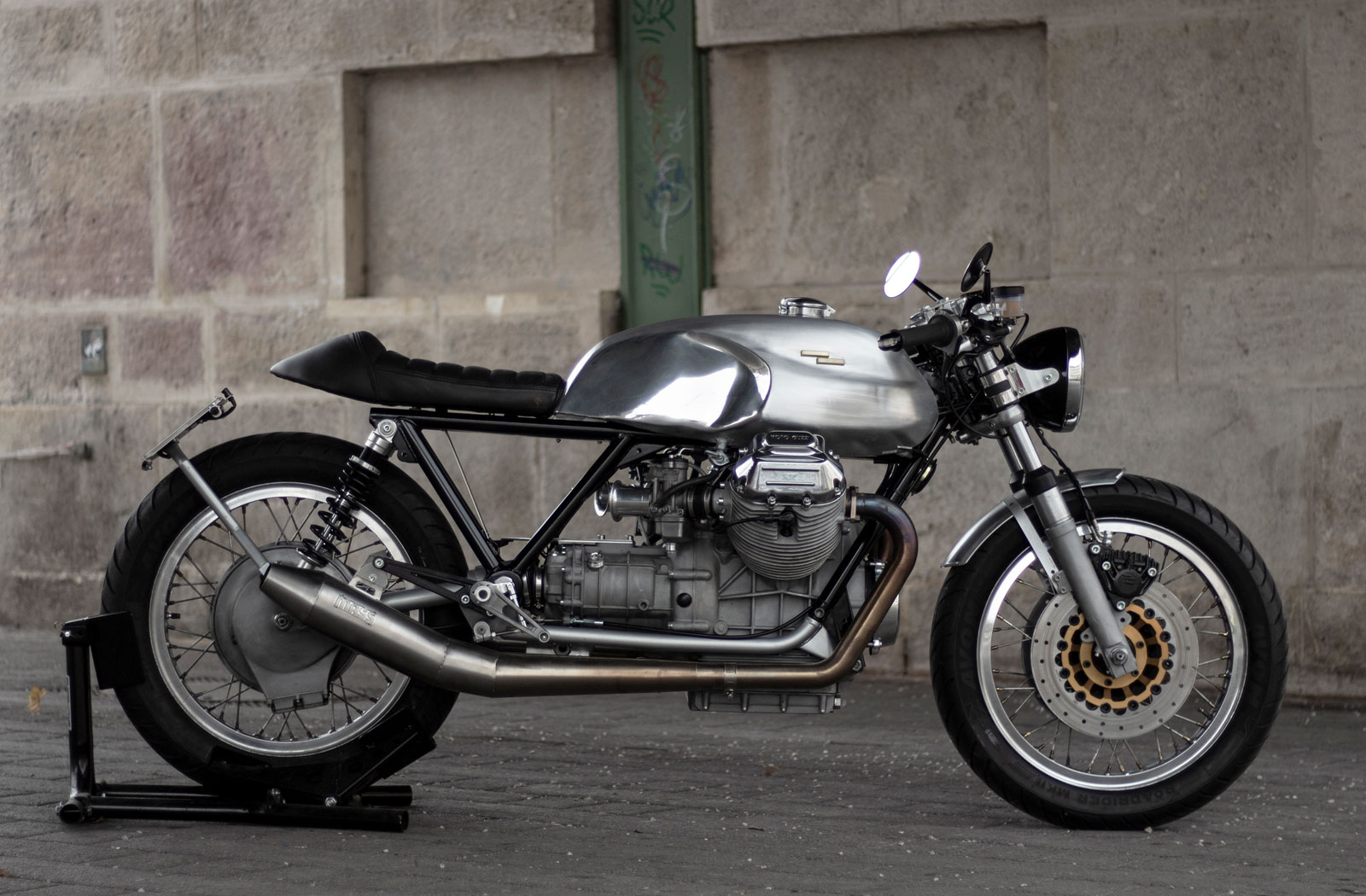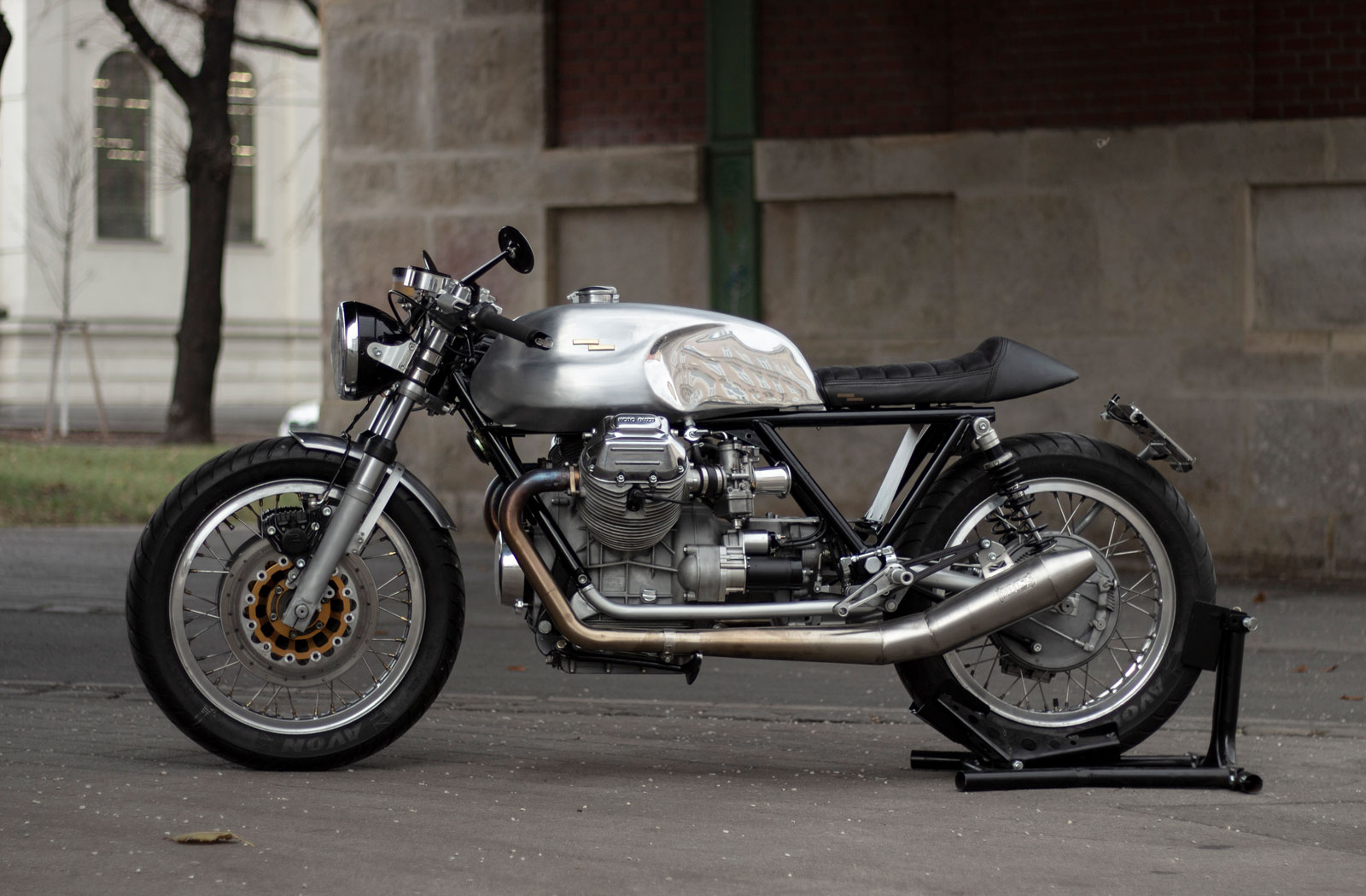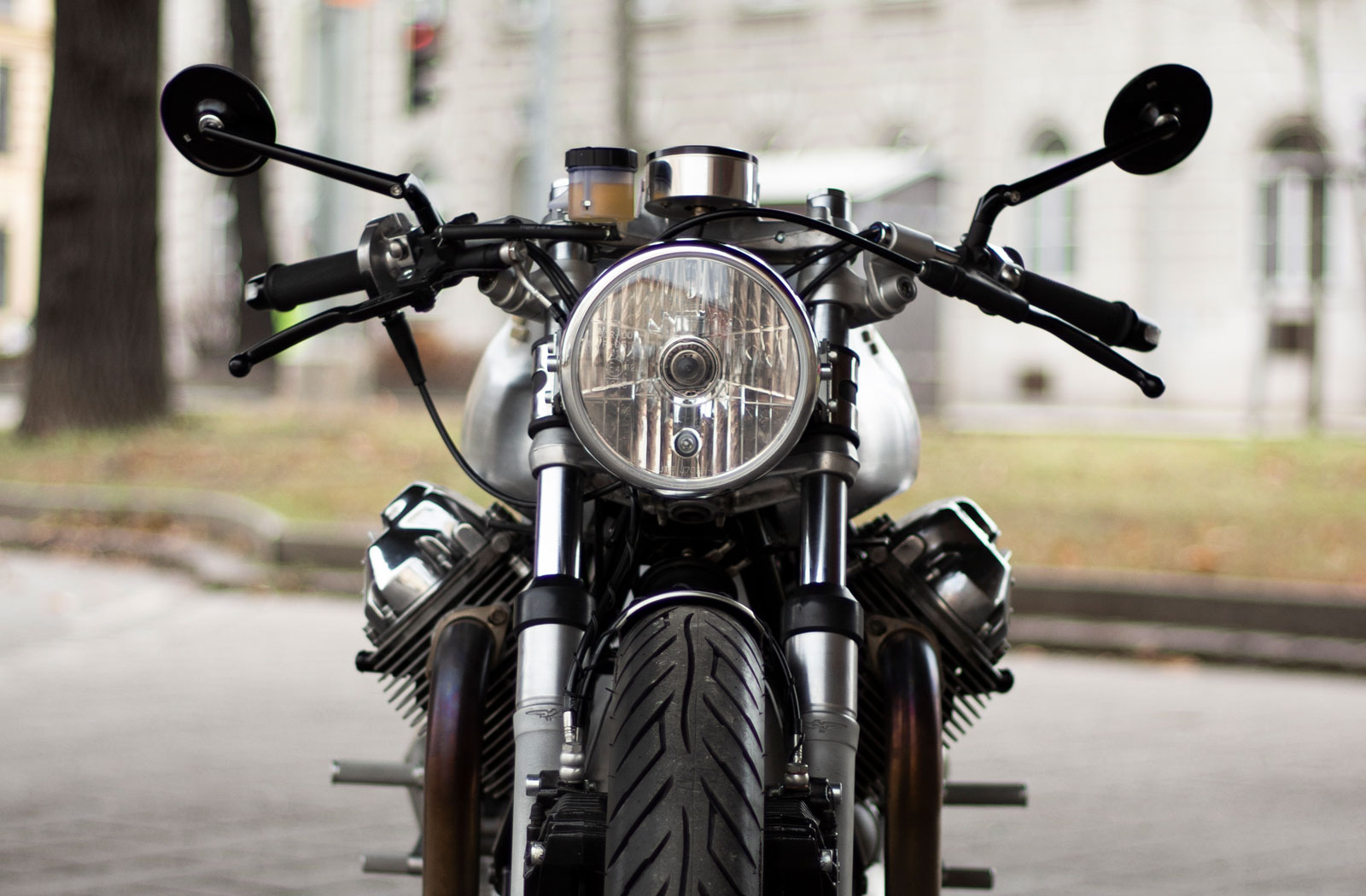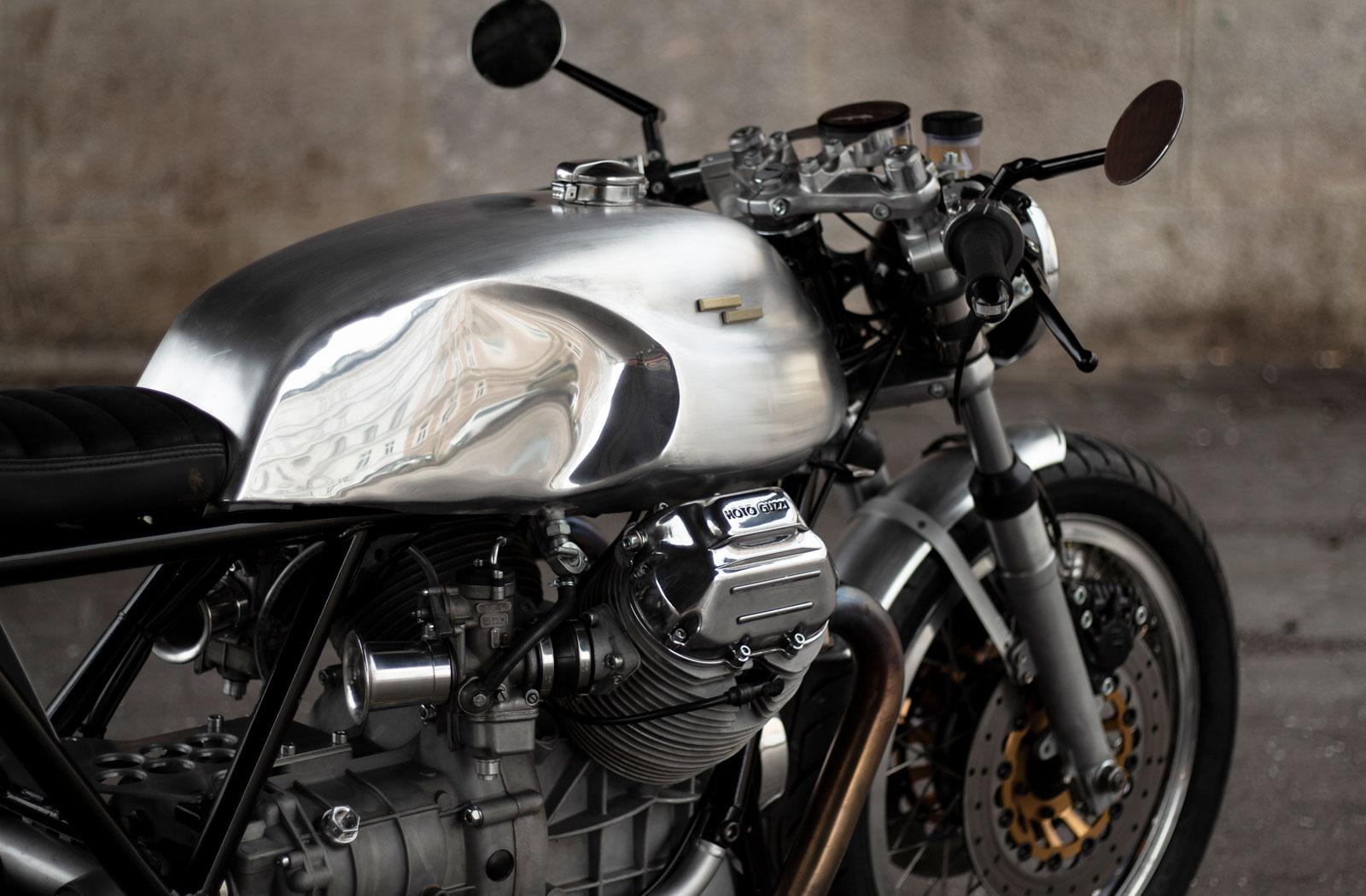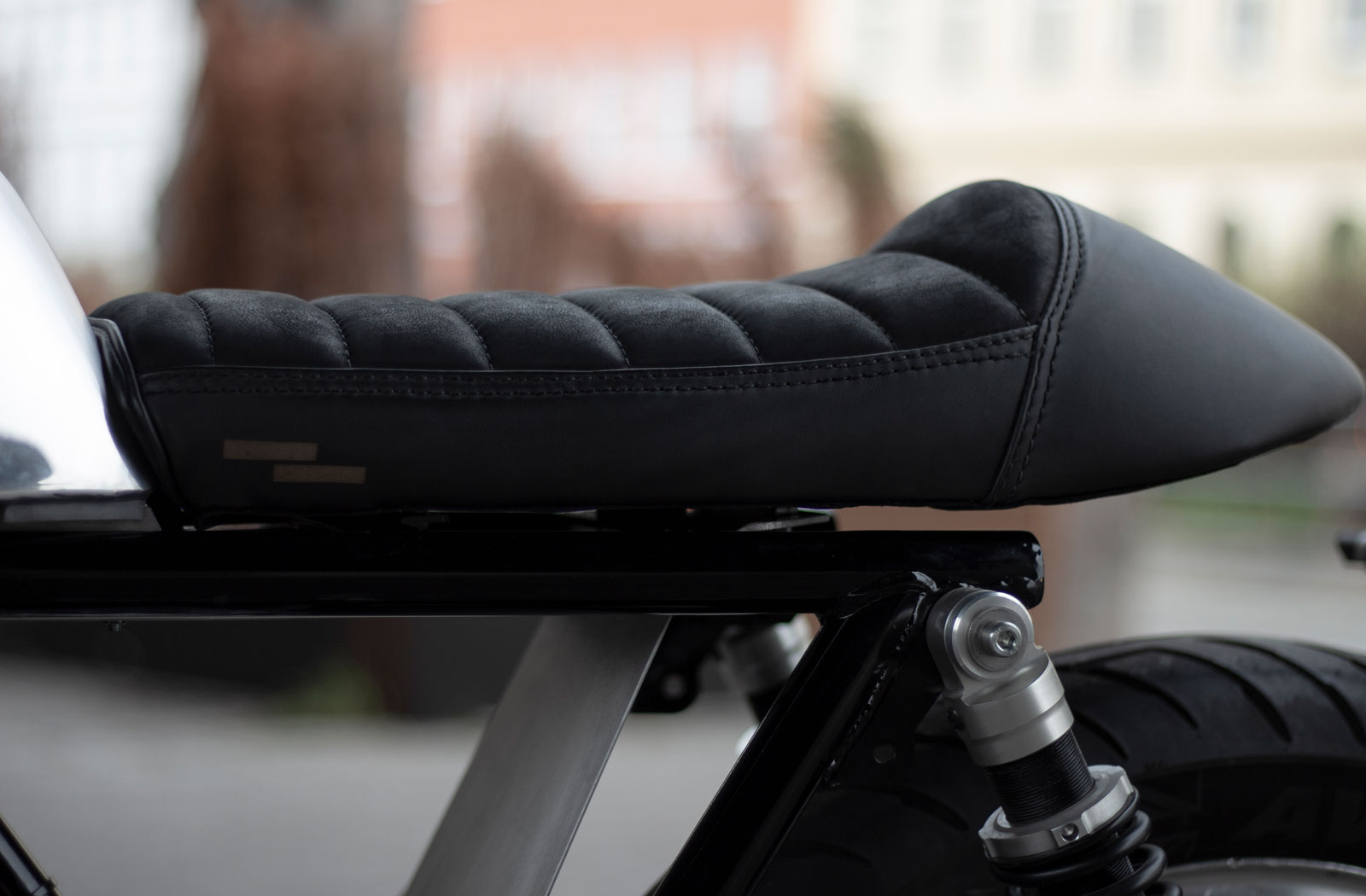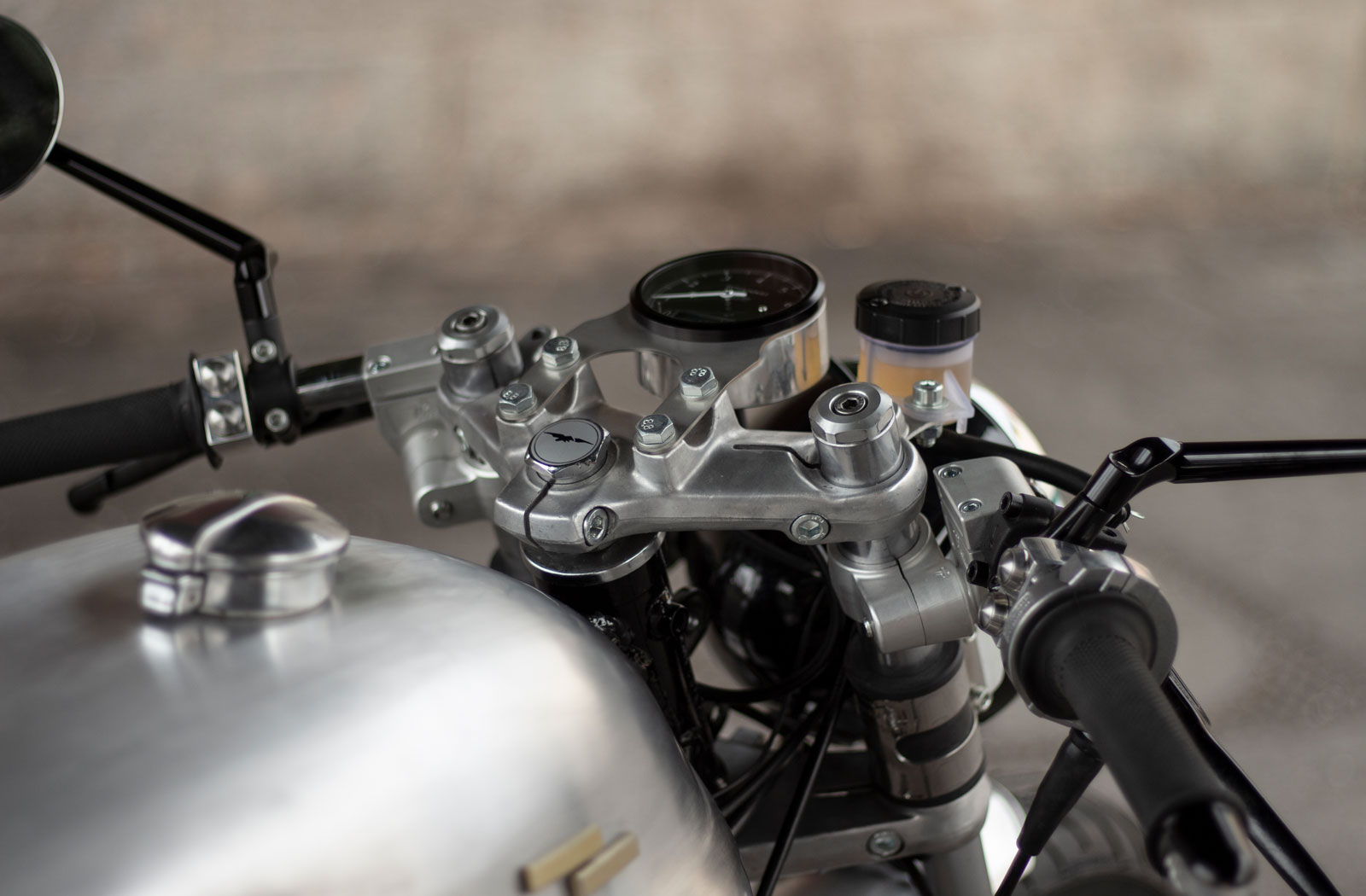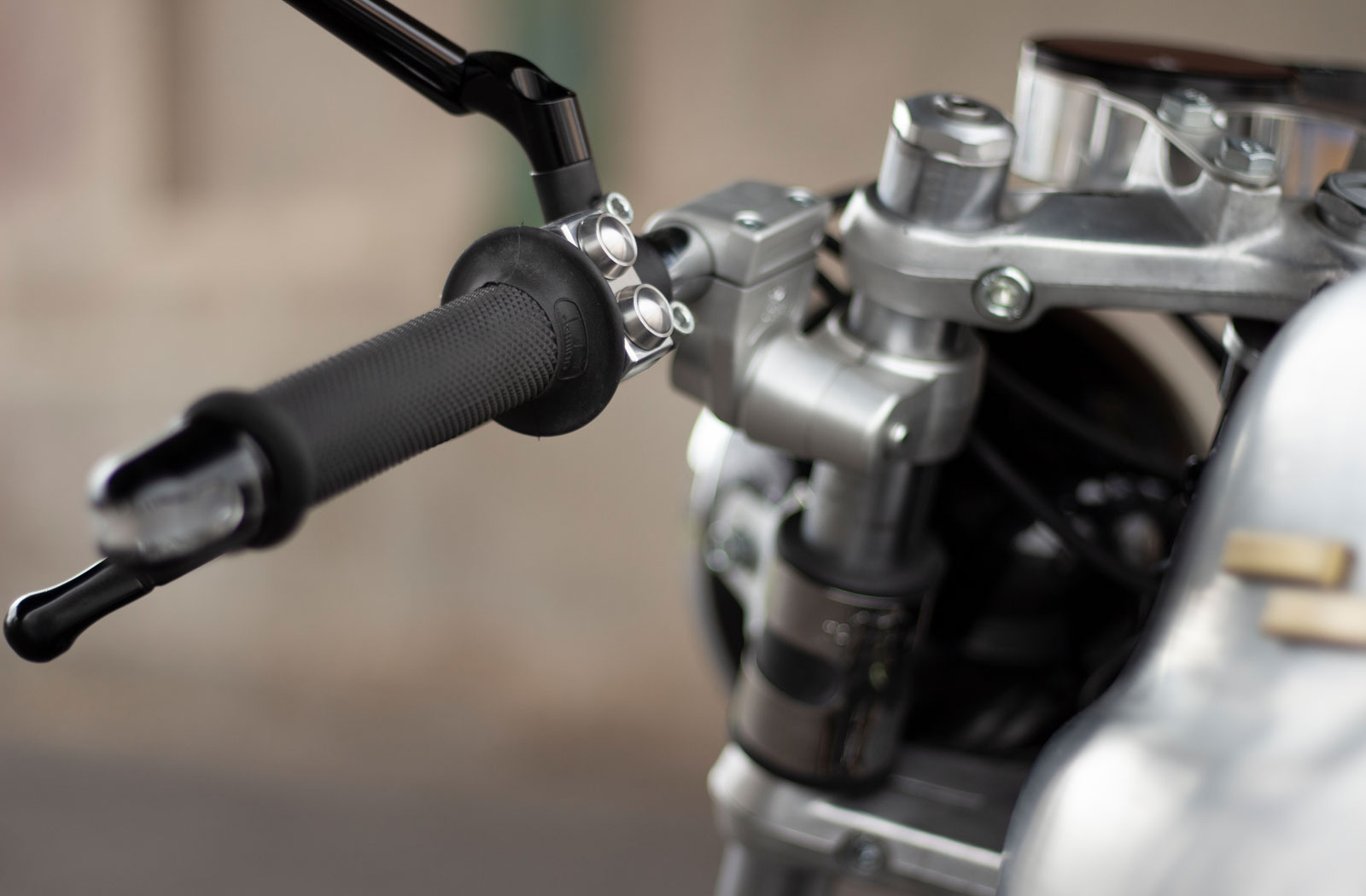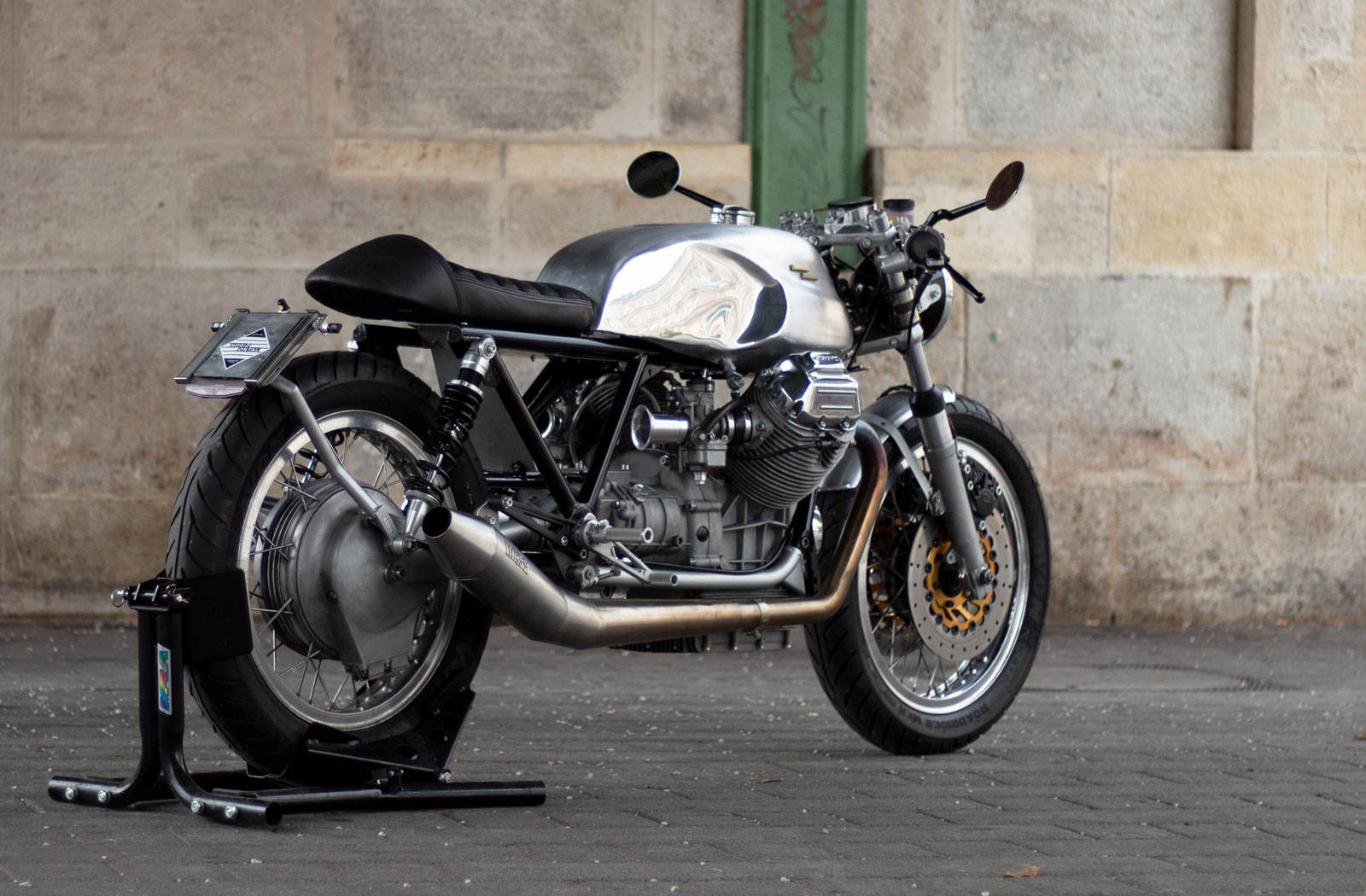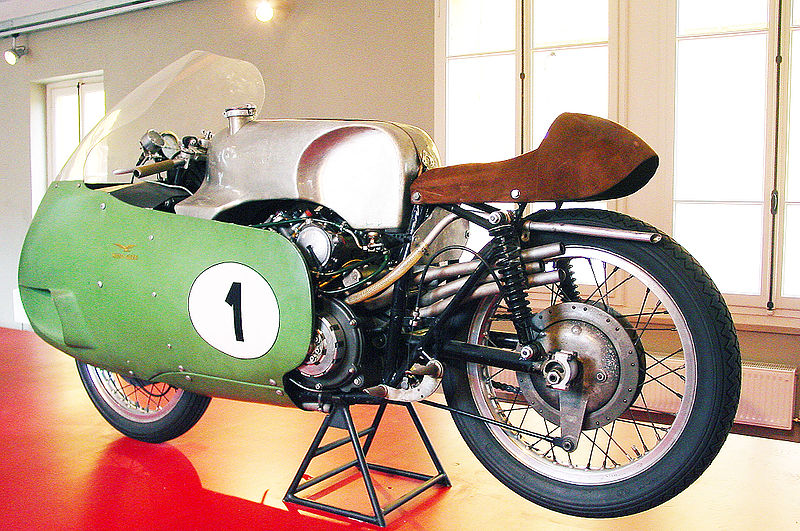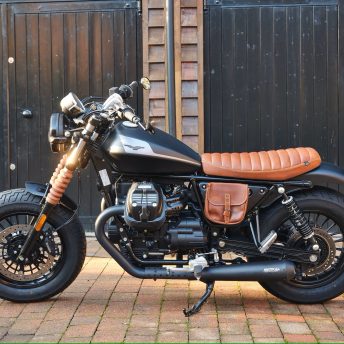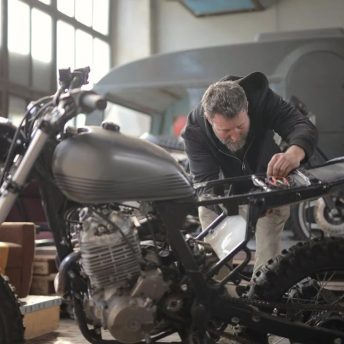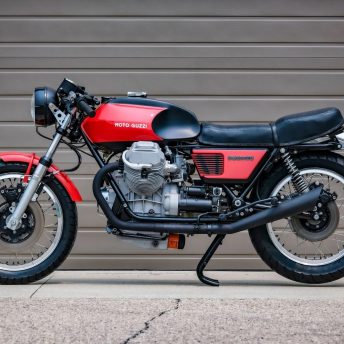In 1971 motorcycle engineer Lino Tonti designed a frame that defined the future of Moto Guzzi motorcycles. Known affectionately as the ‘Tonti frame’ his design was originally used for the 1971 V7 Sport. The frame design was made almost entirely from sections of triangulated straight tube to form a rigid chassis. The design also positioned the engine of the bike lower which in turn lowered its centre of gravity. Both these aspects of the design resulted in a superior handling machine and as a result, Tonti’s frame design was used heavily throughout the Guzzi range until the 1990s.
Paul Führmann owns and operates the workshop Horizontal Moto in the heart of Vienna, Austria. As you’d guess from the name, Paul’s workshop specialises in Moto Guzzis. Naturally, Paul is well aware of Tonti’s contribution and the motorcycles that benefitted from his design. For this reason, Tonti framed motorcycles are popular donors at Horizontal Moto.
Paul’s approach to customisation is very much in line with the cafe racer ethos of reducing to the absolute minimum and creating straight, low and clean lines. His latest work epitomises this approach and has once again been applied to a Tonti framed Moto Guzzi. He’s named the bike ‘Horizontal 921’.
Horizontal 921 was built upon a 1972 Moto Guzzi 850T Sports Tourer platform. When it was released the 850T was hailed as a utilitarian all-rounder. It featured a sporty Tonti frame, a user-friendly and bulletproof V-twin engine and offered an immensley comfortable ride. Despite this, the 850T was only in production for a short few years. It was outsold by the hugely popular inline-four Japanese bikes of the era. But for Paul, the 850T was the perfect starting point for his latest project.
“The concept of horizontal 921 is directly derived from mid-century track bikes,” says Paul. This translates to a stripped-down motorcycle with a handmade aluminium fuel tank, spoked wheels and the removal of anything that wasn’t functionally essential.
The project began with some modifications to the 850T Tonti chassis. Paul trimmed the subframe down to tighten the bikes visual proportions. He also cut off any mounting points for the original bodywork and ground away any evidence of their existence. The entire frame was then resprayed in timeless gloss black. Paul then turned his attention to the stars of the build. The new fuel tank and tail.
“The most obvious and unique aspect of this bike is its custom-built aluminium fuel tank and finest suede leather seat,” Paul explains. “They had to work together perfectly as one line from front to tail.”
To realise his vision for the tank Paul reached out to UK handcrafted aluminium experts Tab Classics. The new tank, which is made especially to suit Tonti frames, is the longer version that Tab offers. Paul chose it to emphasise the track racer look by setting up a stretched out riding position. To complete the look the aluminium tank has been finished using both polished and matte finishes and fitted with a classic Monza filler cap.
To complement the new tank, Paul commissioned Austrian leather artisan Ledernardo. The resulting wasp’s tail seat and cowl sits flat on the frame rails to establish the bike’s level bone line. Ledernardo finished the seat in a similar way to old race bikes with leather covering the body and the upper padding wrapped in suede for more grip.
Paul’s overall goal with the Guzzi was to recreate a bygone style, but this didn’t mean the motorcycle had to perform like a classic. “While the appearance of this build is intended to be that of a classic racer, all hidden components are top of the line and digital wherever reasonably possible,” he says. So to bring the 850T up to 21st-century spec he’s completely rewired it and added some modern gadgetry from Motogadget. Stashed away out of sight is the new brain of the bike, a Motogadget M.Unit. There’s also a Motogadget Chrono Classic gauge mounted to the top yoke and Mo.Switch buttons on the handlebars.
For lighting, Paul opted for a classic 7-inch incandescent headlight. Horizontal 921 was always destined to be registered for the street but standard indicators would detract from its mid-century racer look. To get around this he’s used LED bar end indicators and tiny LED dual function turn/brake units in the rear.
To complete the racer riding position the 850T stock handlebars have been replaced by Tarozzi adjustable clip ons. Tarozzi also supplied the rear-set footpegs and handlebar grips. The mirrors are another Motogadget addition.
Paul has also added a few Horizontal Moto bespoke parts which he custom designed and CNC machined himself. These include the bracket that holds the Motogadget speedo in place, a battery plate, velocity stacks and the hugger styled license plate holder.
For improved stopping power, Paul’s added Spiegler brake disks in combination with a Brembo PS 16 front brake cylinder. A custom made adapter allows the rear drum to function properly with the rear sets. Of course, the suspension is upgraded too with YSS custom shocks in the back and Bitubo internals installed into the original forks. The bike is also rolling on a custom wheel setup using Borrani shouldered alloy rims which are perfectly suited to this bikes classic racer vibe.
Of course, none of this would mean anything if the engine of the bike wasn’t up to scratch.
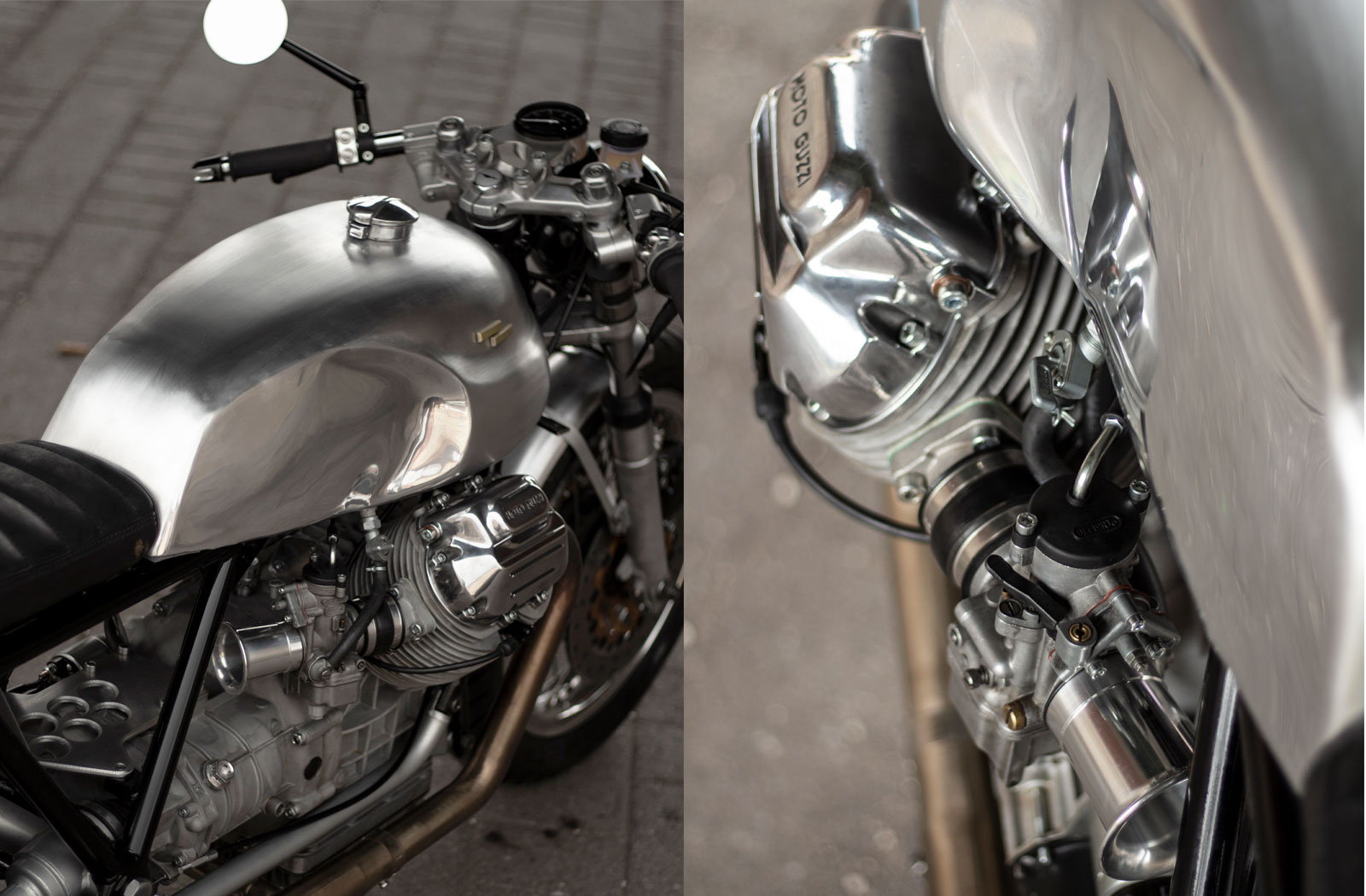

To put any reliability concerns to bed Paul completed a comprehensive overhaul of the 844cc V-twin. After delving deep into the motor Paul glass bead blasted the engine and polished the heads to a mirror shine. He then made a few tweaks to extract some more fun out of it.
The Horizontal 921 inhales via a set of Dell’Orto PHF36 carbs as opposed to its original VHB 30s. As for the exhaust he had something really special in mind. “The shape of the custom-designed exhaust was certainly one the biggest challenges during the build,” he says. So to achieve what he wanted he teamed up with his friends at MASS exhausts. Mass turned his idea into a “stainless sculpture” and Paul confesses it’s his favourite aspect of the build – and we’re not about to argue with him.
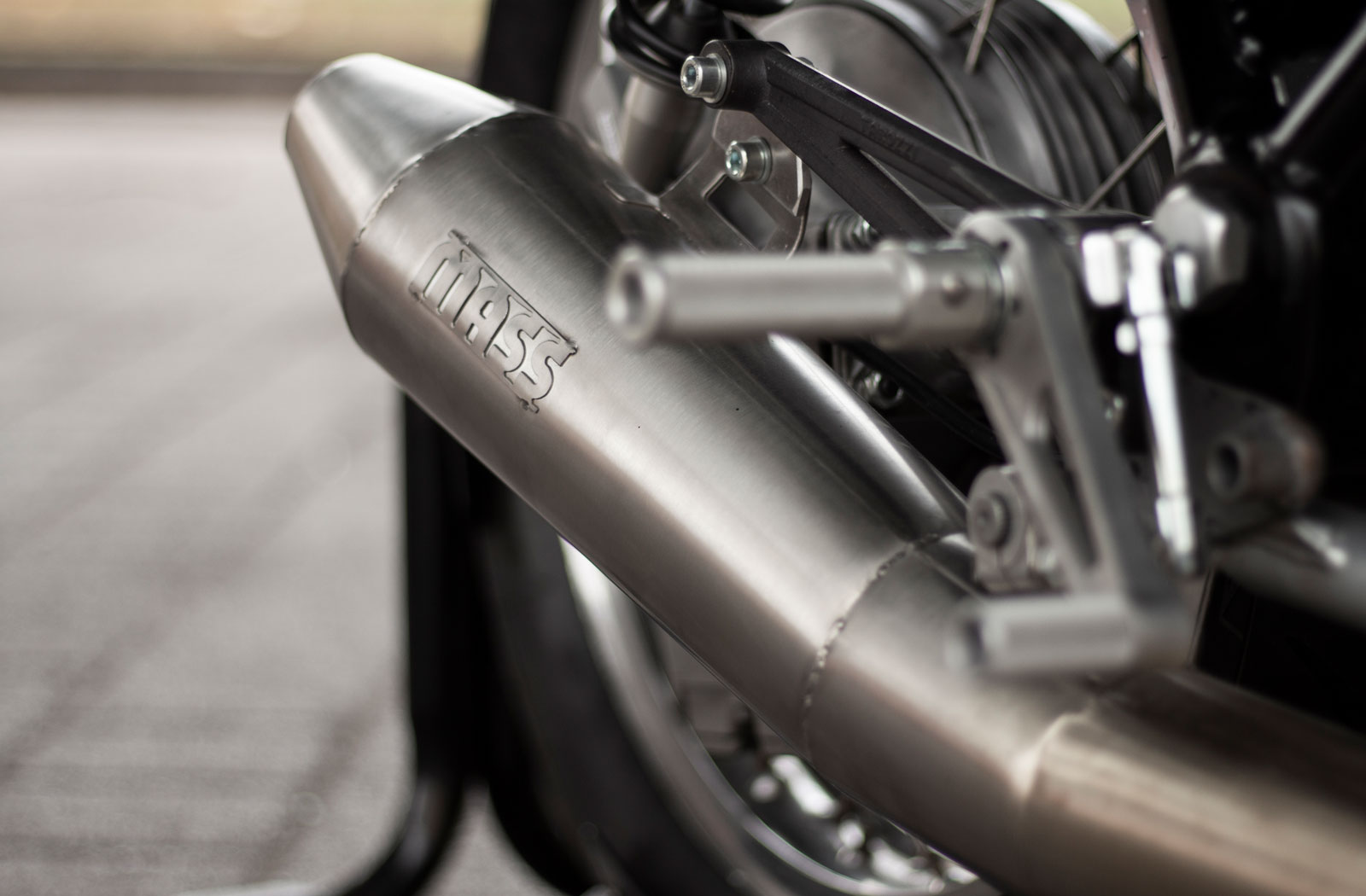

Paul’s work turning this 850T into a mid-century racer lookalike has certainly paid off and he’s happy to report the difference in performance is significant too. “The intake changes have clearly added to the agile riding performance, especially at higher rpm,” he says. “In combination with the electronic ignition and new powerful coils, the Guzzi gained some power on the top end without cutting significant torque in the low rpm region. The build also weighs around 190kg making it significantly lighter than the original donor bike (211kg).”
The Moto Guzzi 850T may not have been a hit back in the seventies, but thanks to Paul this one’s sure to attract a lot of praise.
